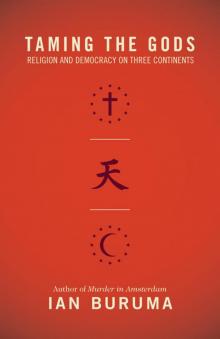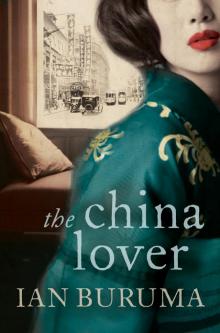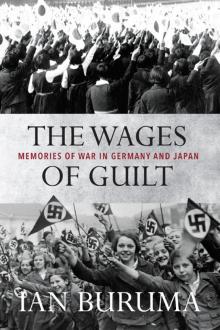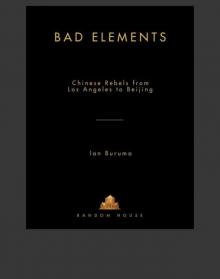- Home
- Ian Buruma
Inventing Japan: 1853-1964 (Modern Library Chronicles) Page 14
Inventing Japan: 1853-1964 (Modern Library Chronicles) Read online
Page 14
The Left might have been more successful in postwar Japan if it had been less dogmatic and prone to tear itself apart. After the riots in 1952, the communists began to fall out of favor. The Communist Party had tried to gather the marginal and disadvantaged around the Red banner: Koreans, outcasts, and day laborers. But violent purges and the intolerance of dissent made the Communist Party itself more and more marginal. The socialists, however, divided in a right and left wing, still occupied about one-third of the lower house seats, sometimes more, sometimes less. They were backed by the largest trade union, which was led by leftist hard-liners and still had considerable power. The conservatives were split between the Democrat Party and the Liberal Party, led by Yoshida.
For a moment, in 1955, it looked as though the Socialist Party might have a chance. The right and left wings made peace and merged into one Japan Socialist Party (JSP). But this galvanized the Liberals and Democrats, who, after a spate of mutual calumny and backstabbing, formed the Liberal Democrat Party (LDP). The architect of the merger was Kishi, and big business was the force that drove it. The first LDP leader was Hatoyama Ichiro, another veteran of the old kokutai elite who had been purged by SCAP for his suppression of free speech in the 1930s. This new alignment of parties became known as the “1955 System.”
In December 1955, a young radical student at Kyoto University, soon to become a world-famous film director, wrote the following sentence in his diary: “Ten years after the war it looks superficially as if democratic forces have suffered a setback. But in fact they have progressed. The time of unruly romanticism has come to an end. The masses have got their foothold now and we enter a time of realism.” A few years on, Oshima Nagisa would be deeply disillusioned.
The Japan Socialist Party started off with a self-inflicted handicap. As a result of the merger, the left wing dominated the party leadership. Despite the popularity of pacifism in Japan, the JSP’s aim to lead the workers’ revolution against capitalism in Asia hardly matched the more modest aspirations of most Japanese. The LDP, on the other hand, quickly made the 1955 System into the LDP System. With the help of big business, Washington, senior bureaucrats, and an electoral system that favored the conservative rural areas, the LDP built up a formidable political machine. It was founded on money: money from construction companies, crime syndicates, industrial corporations, CIA slush funds, and trading companies, sluiced through a network of pork barrels, managed by party factions whose members could expect tenure in the Diet as long as the money kept flowing to their constituents. The factions were formed around powerful bosses, who were rotated as party leaders and prime ministers, so that everyone had a chance to feed at the trough. To operate smoothly, the LDP System relied on fixers behind the scenes, which is where old racketeers such as Sasakawa Ryoichi and Kodama Yoshio came in. Every new LDP prime minister vowed to abolish the factions. None of them did. The socialists did not get another chance to govern for forty years, and even then they did not last long.
So Oshima Nagisa, the film director, was right. A new age was at hand, but not the one he had envisaged. In 1956, Japanese were mesmerized by a new slogan: “The PostWar is Over.” It was the first sentence of the Economic White Paper, which set the scene for almost forty years of breakneck economic growth. Although it would later become common among Japanese intellectuals and politicians to attribute economic success to ancient Japanese virtues—obedience, self-sacrifice, hard work—or aspects of the “national character”—technical dexterity, superior sensitivity, group consciousness—the postwar boom had American as well as Japanese fathers: Douglas MacArthur and Joseph Dodge had had almost as much to do with it as the wartime bureaucrats and conservative politicians, who managed a remarkably smooth transition from the prewar kokutai to the LDP System.
—
There was to be another upheaval, however, another spasm of the fading influence of the radical Left. When Kishi became prime minister in 1957, he was keen to settle the unresolved constitutional problem once and for all. To restore Japan’s status as an independent sovereign power, both the constitution and the security treaty needed to be revised. The security treaty, which gave the United States a free hand on Japanese soil, reminded many Japanese, on the Right and the Left, of the unequal treaties in the 1860s. U.S. bases were constantly being attacked by irate mobs. Kishi wanted the revisions because he was a nationalist, but also because he wished to see a system of two conservative parties holding each other in check. He believed that as long as there was no basic agreement over the constitution and Japan was humiliated by an unequal treaty, politics would continue to be a struggle between a radicalized Left and one conservative party, easily corrupted by its monopoly on power. For all his past sins, Kishi’s analysis would prove to be correct.
To smooth the way toward a more assertive Japan, Kishi first went on a grueling tour of Southeast Asia, where he apologized for the atrocities committed by Japanese troops. He also played golf in Washington with President Eisenhower. Still, Kishi’s attempts to change the constitution came to nothing. But he tried hard to get the cooperation of leftists as well as conservatives for his security treaty revisions. The problem was that few people really trusted the old apparatchik. A botched attempt to give the police more sweeping powers resulted in riots outside the Diet building. Then he introduced “moral education” in schools, a measure that smacked of prewar patriotic propaganda. Not surprisingly, the socialists changed their mind about the treaty revisions and decided to oppose him all the way.
The deal he was promised in Washington was a minor improvement. The Japanese would be “consulted” in future about U.S. deployments of troops and equipment on their territory. Eisenhower would seal the new deal with a visit to Tokyo. It was something, but not enough. By the end of 1959, radical students were rushing toward the Diet and pissing on its doors. First tens of thousands, then hundreds of thousands joined the demonstrations. Police barricades were crushed. The liberal newspapers, stirred by pacifist patriotism and their loathing of Kishi, backed opposition to the security treaty. A young girl was trampled to death in a police charge. Soon almost a million people were in the streets, screaming—in English—“Yankee go home!”
The Socialist Party chairman, Asanuma Inejiro, called “American imperialism” the “common enemy of the Japanese and Chinese peoples.” In a replay of prewar Japanese politics, he was stabbed to death by a right-wing fanatic. President Eisenhower’s envoy was mobbed in his car on the way from the airport. Despite the promise of gangsters, organized by the old fixer Kodama Yoshio, to help the police guard his route, Eisenhower’s visit to Japan had to be called off. For a moment it looked as if revolution might be at hand. All the hatred and distrust of the old order, and the United States, which was blamed, not without reason, for supporting it, gathered like a storm in the streets of Tokyo. Kishi toyed with the idea of calling for the Japanese Self-Defense Forces, but fortunately he thought better of it.
In May 1960, there was almost as much mayhem inside the Diet itself. Ratification of the treaty in the lower house was boycotted by the socialists, first by blocking the debate in various ways, then by locking up the Diet Speaker in his office. The Speaker, who had been General Tojo’s defense counsel at the Tokyo war crimes trials, ordered riot police to come in and release him. Under police protection, after midnight, the LDP forced a vote to ratify the treaty without a JSP member in sight. Kishi had won, but only just. He knew he had to resign. An attempt was made to kill him. His career, so spectacularly revived after the war, was over—in public, that is; behind the scenes he continued to be a formidable puppet player.
If the public Kishi was a spent force, so was the radical Left. There was a bloody strike in 1960, lasting many months, of coal miners who had lost their jobs when the government decided to meet Japan’s energy needs with oil. In the late 1960s and 1970s, large numbers of students protested against the Vietnam War, but to no considerable effect. As would be the case in Germany and Italy, the radical Left splintered
into murderous factions, whose members would hijack planes and plant bombs to promote the world revolution, but there would never be anything on the scale of 1960 again. After the hated Kishi had played his part as a lightning rod for popular frustrations, he was replaced by a dull financial bureaucrat, a Yoshida protégé named Ikeda Hayato. Ikeda did not solve Japan’s constitutional problems, either. But he dealt with them by leaving them alone. He had found another way to dampen discord and appease discontent.
In 1958, Kishi had brought Ikeda into his cabinet as minister of trade and industry. Ikeda’s ministry, MITI, was the successor of Kishi’s old Ministry of Commerce and Industry, which became the Ministry of Munitions during the war. MITI was at the heart of Japan’s postwar economic expansion. Picking up on the idea of a well-known labor economist, Ikeda promised to make all Japanese richer. His Plan to Double Individual Income, published in December 1960, was a deliberate move to take people’s minds off constitutional issues. Money, more evenly spread, would buy off the moderate wing of the Japan Socialist Party. Money, it was hoped, would make people forget about politics altogether. Stability and prosperity were guaranteed in the paternal LDP state by the competent technocrats who would guide the Japanese economy for the good of the nation. This was the essence of the Ikeda deal.
The disruptive leftist unions were either intimidated by criminal gangs or undermined by a new system of private company unions, which promised to take care of their workers, as though they were the children of corporate families. The largest companies offered their employees the security of lifetime employment in exchange for absolute loyalty. All these arrangements, often described as ancient Japanese traditions, were actually part of the Ikeda deal. Another part was a program of relentless construction, which turned Japanese cities but especially the countryside into a nationwide building site for ever more roads, bridges, and dams. This was good for the construction business and its gangster affiliates. It was good for ministries in charge of construction and agricultural development. It was good for Japanese industry. It was good for politicians who brought business to rural constituencies. So it was good for the LDP, whose coffers were filled with bribes and kickbacks that accrued to every new building project.
During the 1960s, Japan’s GNP grew at an annual rate of 10.6 percent in real terms. This had the desired effect. The rifts that threatened to tear the country apart were now visible only on the fringes: right-wing thugs still flew the old battle flags and blared military marches from their sound trucks, and the most radical students tore one another to pieces in murderous purges. But most Japanese were politically stupefied by the new era of national prosperity. Pride swelled as a virtual replica of the Eiffel Tower went up in Tokyo, except that this one was higher. In 1964, the first bullet train whooshed from Tokyo to Osaka in three and a half hours. And the world came to Tokyo for the Olympic Games. For a moment, at long last, the Japanese could feel at peace with themselves and the world.
His task accomplished, Ikeda died in that same Olympic year. Another Yoshida protégé, Sato Eisaku, replaced him. Sato was Kishi Nobusuke’s younger brother. He, too, sprinkled sleep, like the political sandman, over the issues most likely to cause controversy in Japan. His approach to foreign policy was simple. Historically, he said, “whenever Japan took a path counter to the United States, the country suffered; and whenever the two countries worked together closely, Japan prospered. My policy therefore, was to cooperate fully with the United States to ensure peace in the world.” Sato promised peace, and more peace. And for this he was awarded the Nobel Peace Prize in 1972.
EPILOGUE:
THE END OF THE POSTWAR
Is this, then, the end of the modern Japanese story? Of course not. But it is the end of the story I set myself to tell. A great deal has happened in Japan since 1964: governments brought down by corruption scandals; the death of Emperor Hirohito and the beginning of a new reign, called Heisei; a bubble economy that made it look as if Japan were about to consume the world; a poison gas attack on Tokyo by religious terrorists; the collapse of the bubble economy. And much else besides. But the postwar order, as it was constructed during the U.S. occupation and consolidated in 1955, is still intact. There are cracks in its foundation, and the timbers are showing signs of rot, but the edifice stands. Until it comes crashing down, 1964 is as good a time as any to mark the end of the rise and fall and rise of modern Japan.
There were moments when it looked as if real change were on the way. The winter of 1976 was such a time of high drama. I had come to Tokyo the year before as a student. Small traces of the war were still visible then. Veterans without arms or legs, dressed in white kimonos, sat outside the railway stations, playing sad wartime tunes on their keening accordions. They were visible, yet the people rushing past, a little too quickly, perhaps, appeared not to notice them, as though their haunting presence were just a chill in the balmy air of rising prosperity.
In front of Shinjuku station, the favored spot in the 1960s of student demos and theatrical “happenings,” I watched people toss peanuts at a crude caricature of Tanaka Kakuei, the disgraced former prime minister. “Peanuts” was the term used by middlemen who collected cash from the Lockheed Corporation to be distributed among Japanese politicians, including Tanaka, in exchange for landing an aircraft deal. The main broker was Kodama Yoshio, the wartime racketeer who was in prison with Kishi Nobusuke. When news of this latest scandal broke, a young porno movie actor crashed his light plane into the Lockheed office in Tokyo as an act of protest against capitalist corruption. He wore the uniform of a kamikaze fighter. His last words were “Long live the emperor!” Thus does farce echo the tragedies of history.
Tanaka had already resigned as prime minister two years before for what the Japanese media termed his “money politics,” yet he was astonished to be indicted for taking bribes. Indeed, he felt it as a stab in the back. Corruption, after all, had become a normal part of Japanese politics. It was the only way to get things done. Tanaka had simply outspent his rivals and got more things done. He was ousted in the end, not by investigative journalists, as many thought, but by his old rival Fukuda Takeo, a cunning ex-bureaucrat whose career, like Kishi Nobusuke’s, began in Manchuria. Members of Fukuda’s faction had leaked details of the case to the press. Having Tanaka brought down and kicked out of the LDP was Fukuda’s revenge for Tanaka’s attempt to usurp the LDP System. Even so, Fukuda could not destroy Tanaka’s influence. Tanaka’s faction continued to control the LDP for many years after the boss had left to become an independent lawmaker.
Tanaka was the consummate political populist, all glad hands and can-do, and Fukuda was the typical political bureaucrat. Since Ikeda made his pact with the Japanese people to smother politics with technocratic largesse, bureaucrats had dominated the LDP. They set the policies, wrote the parliamentary speeches for cabinet ministers, and took their places in the LDP hierarchy upon retirement from their ministries. The politicians’ job was to work the pork barrels to make sure the LDP stayed in power. Factional rivalry inside the LDP ensured that no politician ever got above his station and ended up controlling the system. However, through a combination of political genius and pork barreling on a stupendous scale, Tanaka came closest to doing just that. His patronage had put so many people in his debt that this son of a rural cattle dealer who had not even completed high school almost managed to crack the bureaucratic dominance. For the first time in recent history, politicians were telling bureaucrats what to do. The result was that Tanaka made Japan vastly richer, and also vastly more corrupt.
To be a populist is not to be a democratic reformer. Tanaka never tried to reform the LDP System. He manipulated it to create wealth and jobs for the largest possible number of people. Tanaka’s background was in construction. He married the daughter of his construction boss. Construction funded his political career. Tanaka promised to turn the whole Japanese archipelago into a construction site. Even when his influence waned after his stroke in 1985, the building program, and the
resulting cash flow that kept the LDP afloat, continued with monotonous relentlessness: more roads, more bridges, more dams, more conference centers, more airports, more pachinko (pinball) parlors, more museums, more town halls, more hotels, tunnels, theme parks, and industrial zones. Many of these projects were useful—indeed, much needed. Many were not. Japan is now full of unnecessary tunnels, roads that go nowhere, lifeless rivers, bridges that nobody crosses, half-empty museums, and theme parks that few care to visit. These are the unlovely monuments of the Ikeda deal and Tanaka’s money politics.
In terms of brute financial power, however, Tanaka’s legacy was a fantastic success. In the 1980s, Tokyo yuppies ate gold leaf. With a prime piece of Japanese real estate, you could have bought yourself a small country. Japanese authors wrote books crowing about the coming “Japanese century”: Today Tokyo, tomorrow the world! Foreigners wrote books about the coming war with Japan, or the all-conquering yen, or the unstoppable Japanese system, which could be countered only by equally combative industrial policies of our own. Western businessmen read seventeenth-century tracts about samurai strategies. Books on Japanese management techniques became instant bestsellers. It seemed as though the great Japanese bonanza would never end.
Yet there was a sense among many Japanese of something missing in their rich and increasingly ugly country. It was not for nothing that the leaders of Aum Shinrikyo, the quasi-Buddhist cult, which tried to commit mass murder in 1995 by spreading sarin gas in the Tokyo subways, were men and women of the highest education. Many of them were scientists or trained for the technocratic bureaucracy. They were the heirs of the Ikeda deal, and in the absence of political responsibility for the here and now, they filled their heads with murderous spiritual utopianism. The group aimed for a huge conflagration, a spectacular destruction of what they saw as a meaningless society. A wonderful new world would rise from the ashes of postwar affluence.

 A Japanese Mirror
A Japanese Mirror Taming the Gods
Taming the Gods The China Lover
The China Lover A Tokyo Romance
A Tokyo Romance Theater of Cruelty
Theater of Cruelty Year Zero
Year Zero The Wages of Guilt
The Wages of Guilt Murder in Amsterdam
Murder in Amsterdam Bad Elements
Bad Elements Their Promised Land
Their Promised Land Occidentalism
Occidentalism Anglomania
Anglomania Inventing Japan: 1853-1964 (Modern Library Chronicles)
Inventing Japan: 1853-1964 (Modern Library Chronicles) The Missionary and the Libertine
The Missionary and the Libertine